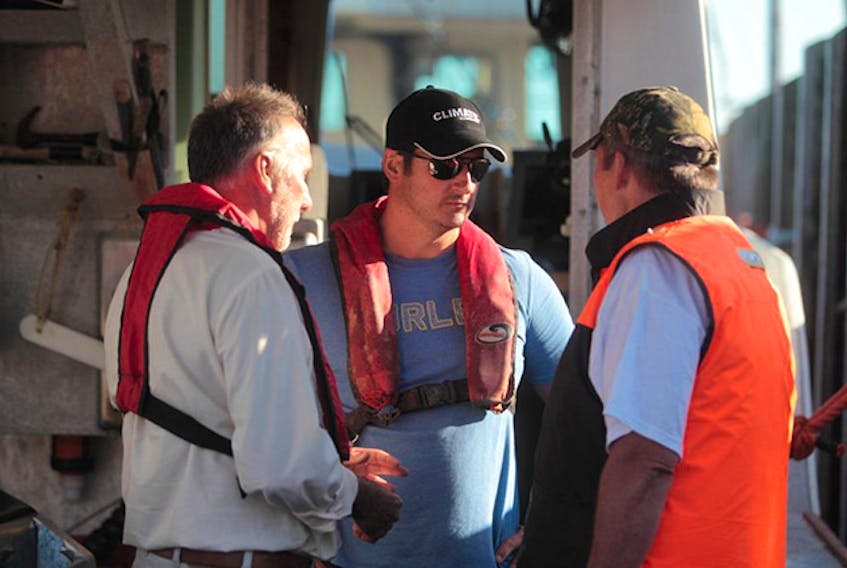SPONSORED CONTENT
Wedgeport lobster captain Cory Nickerson doesn’t mince words when it comes to safety expectations on his boat, the Beverly Ann.
“If anybody wants to come fishing on my boat, you have to wear a PFD. End of story,” Nickerson says in a video about Nova Scotia’s changing safety culture when it comes to fishing.
That crisp summary of a key part of Captain Nickerson’s safety policy offers a window into the Internal Responsibility System (IRS) — the guiding principle for Nova Scotia’s occupational health and safety law.
The basic idea is that everyone in a workplace shares responsibility for safety, based on their own level of authority and ability.
As the employer, Nickerson has set the expectation when it comes to personal protective equipment, or “PPE” in safety jargon. He’s also demonstrating his responsibility to “take every reasonable precaution to ensure the health and safety of people at or near the workplace.”
In turn, his crew members have a responsibility to wear their PFDs — in other words, to “use safety devices, equipment and clothing required by the employer and safety law.” That’s part of their responsibility as workers.
As the fall lobster season gears up again in southwest Nova Scotia, many in the industry are supported by training programs offered by the Fisheries Safety Association of Nova Scotia. And all of them are reminded about the real reasons safety matters — their friends, family and life beyond work.
Principles apply to all workplaces
A big part of everyone making it home safely is having everyone do their part when it comes to safety. The underlying principle of the IRS is that everyone should do what they can to keep a workplace safe and it applies to the whole safety system, which includes lock-out procedures, hazard identification and more. It’s relevant in every single workplace, from a home-based office to a major industrial operation. It’s also one of many key factors that have led to an improved safety culture in Nova Scotia’s workplaces, resulting in a significant decrease in the number of workplace related injuries in recent years. Today, there are 1.72 injuries per 100 covered workers, the lowest number ever.
WCB Nova Scotia stats show more and more employers report having basic safety practices in place. In 2007, for example, 59 per cent of workplaces surveyed said they had a health and safety program. By the summer of 2017, that number was 72 per cent, which is much better, but is also proof there’s still work to do.
Continued progress will take leadership in every workplace. And that leadership doesn’t only mean being captain of a ship or having a corner office or a “C-level” title. As “A Call to Lead,” the province’s safety leadership manifesto from WCB Nova Scotia and the Nova Scotia Department of Labour and Advanced Education explains, safety leadership can come from everywhere. It is a leader who knows that actions speak the loudest. And instead of pointing out what others can do, a good leader simply asks, “What more can I do to help us all work safely?” While the answer to that question might be different for every worker and employer in the province, as Nickerson says in his closing line in the video, asking what you can do is so important “Because nothing matters more.”
What more can you do? Visit worksafeforlife.ca to find out.
A Call to Lead









